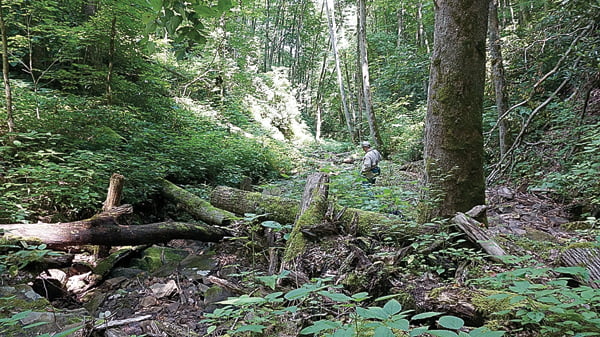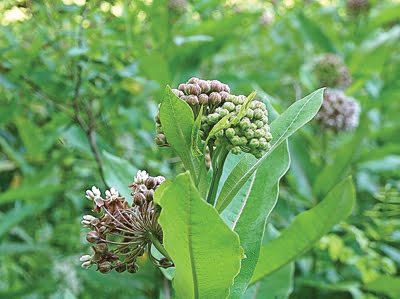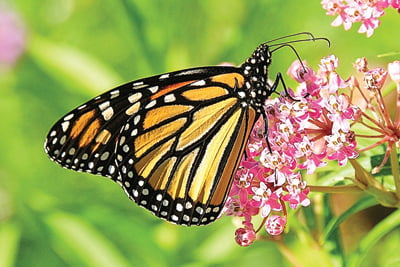


I can always count on my friend Delbert Dinkle up in Mudwallow, Ohio, to keep me on track regarding his opinion of the scope, albeit a narrow one in my opinion, of this dispatch. The title, Watoga Trail Report, may imply to some that it only concerns itself with the numerous footpaths than meander throughout Watoga State Park. Delbert has yet to come to the understanding that the trail report is about “everything” Watoga.
Delbert, a man of immense inflexibility, very effectively got his point across in an email to me stating simply “Watoga ‘TRAIL’ Report,” using capitalization, underlining, highlighting, and quotation marks on the word “trail” for emphasis. He is not one to waste words; consequently, most of his messages resemble Haiku more than the usual correspondence one receives.
But, it is a point well taken, so when I telephoned Delbert to thank him for his good intentions, his long-suffering wife answered the phone. Mrs. Dinkle apologized and informed me that she had strict instructions not to disturb Delbert, and went on to tell me that he has been holed up in the garage the past couple of weeks – with the door locked – building a robotic trail worker.
Mrs. Dinkle said that Delbert had confided in her that this project is top secret and warned her not to tell anybody, particularly their homeowners insurance agent. She further admonished me, “Please, keep it under your hat, you know Delbert.”
Yes, I certainly do.
When I hear more about this impending catastrophe You, dear reader, will be the very first to know. Now on to stuff about trails and things having to do with Watoga State Park.
Jesse’s Cove Trail is unarguably one of the most beautiful trails in the state of West Virginia. The trail borders Rock Run between its mouth at the Greenbrier River and its source near the historic Workman Cabin. And when I say it borders Rock Run, I actually mean that the trail is often in the streambed itself.
Rock Run is bordered by steep rhododendron covered slopes on one side and equally steep rocky slopes on the other – this fact dictates few options for placement of the trail. It benefits from little direct sunlight, so it is always cooler than the surrounding forests.
Wildflowers, such as columbines, several species of trillium, and Jack-in-the-Pulpit, thrive in this canyon; as does the dreaded stinging nettle, so always wear long hiking pants, preferably canvas or other thick material. A hiking stick or poles are a must for the challenging stream crossings and warding off the multitude of rattlesnakes.
Just kidding about the snakes, but the stream crossings are not for the faint of heart.
Even when the trail is considered in ideal condition it is, by its nature, a strenuous hike. Its present state demands a much stronger warning, though. In heavy rains – which we have our share of – the waters of Rock Run rise rapidly. In doing so, they undercut the trail, move stone placements for stream crossings and create massive log-jams.
Heavy winds and erosion cause trees to topple, often blocking the trail. Throw in the sea of stinging nettle, and you may miss the beauty of the canyon altogether because of the misery imposed by the impediments encountered in just getting from point A to point B.
We beg your patience for the current conditions, but be assured we will get in there as soon as possible and restore order. A lot of attention is currently being given to the Arboretum and the trails that compose the routes for the upcoming Watoga Mountain Trail Challenge trail races.
A work date for cleaning up Jesse’s Cove Trail will be announced soon, and you will have the opportunity to come over to the park and help us clean up this unique trail.
If you happen to hike the Ann Bailey trail in the near future, there is a sight in the Workman Meadow across the trail from the cemetery that you do not want to miss. At the western end of the meadow, there is an acre or so of common milkweed just starting to bloom.
Milkweed numbers have been declining in North America for decades now, due in large part to the use of non-discriminate herbicides, and that has resulted in fewer monarch butterflies.
Milkweed is the sole food of the larvae of monarchs, and that is why seeing so much of it in the very heart of the park is cause for joy. Not only is milkweed the only food on the menu for these future butterflies, but it also provides surefire protection from other creatures who would love to make a meal out of them.
And this is the way it works: The milkweed plant contains cardiac glycosides, a derivative of which is used in the treatment of cardiac diseases. The hungry larvae absorb the glycosides and become toxic to birds and other predators. And even better, this protection is passed on to the adult butterfly further ensuring its health and longevity.
So you see Hippocrates was on to something when he said, “Let food be thy medicine, and medicine be thy food.”
Now, if we humans could just find a type of food that, when consumed, would ward off tax collectors and other unwelcome folks…
Hey, it just occurred to me, we do have such food capable of repelling others – we have ramps!
In next week’s Watoga Trail Report we will visit the historic Workman Cabin to check on the progress of its restoration; find out why heirloom apple trees were planted near the TM Cheek overlook, and look into the murder of truffle-hunting dogs in Italy.
In the meantime, take a hike – it’ll do you good and improve your overall disposition.
Ken Springer
ken49bon@gmail.com


